how to create step by step the creation of handmade tanned leather handbags.
Latest posts
-
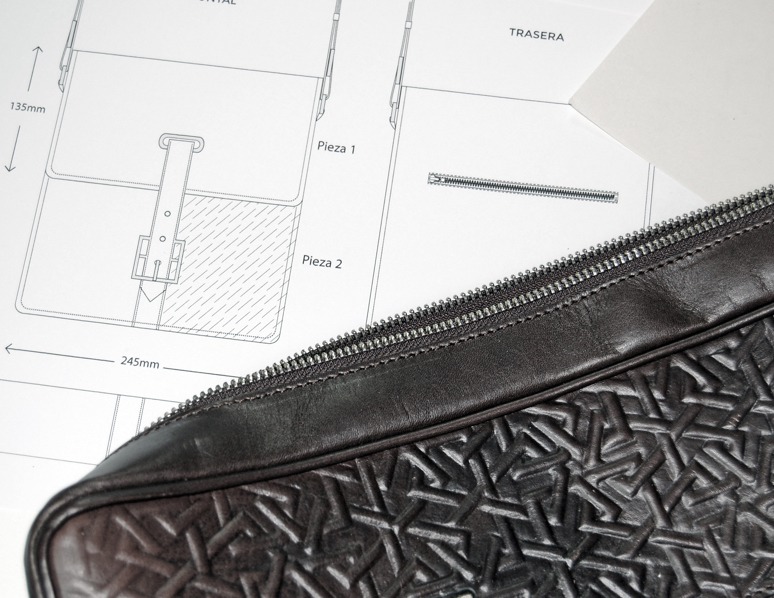 How to make a handmade leather bag step by step?Read more
How to make a handmade leather bag step by step?Read more -
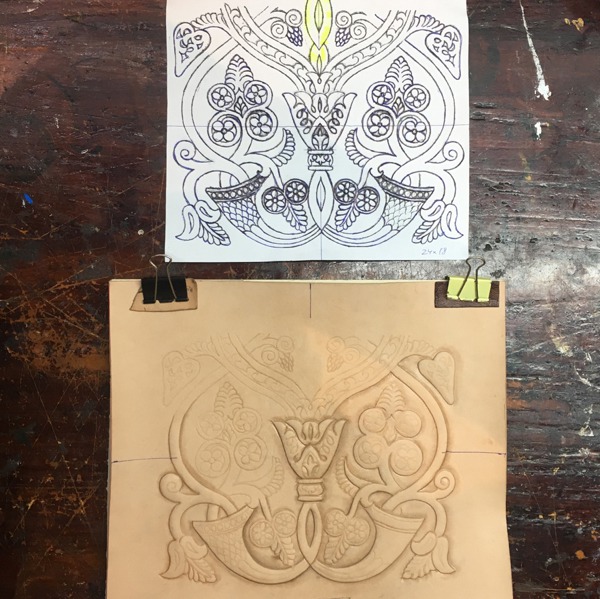 Types of leather What kind of leather do we use for each product?2020-09-11Read more
Types of leather What kind of leather do we use for each product?2020-09-11Read moreAre you interested in the types of leather we use to make our product? Visit our blog and read about the creation of...
-
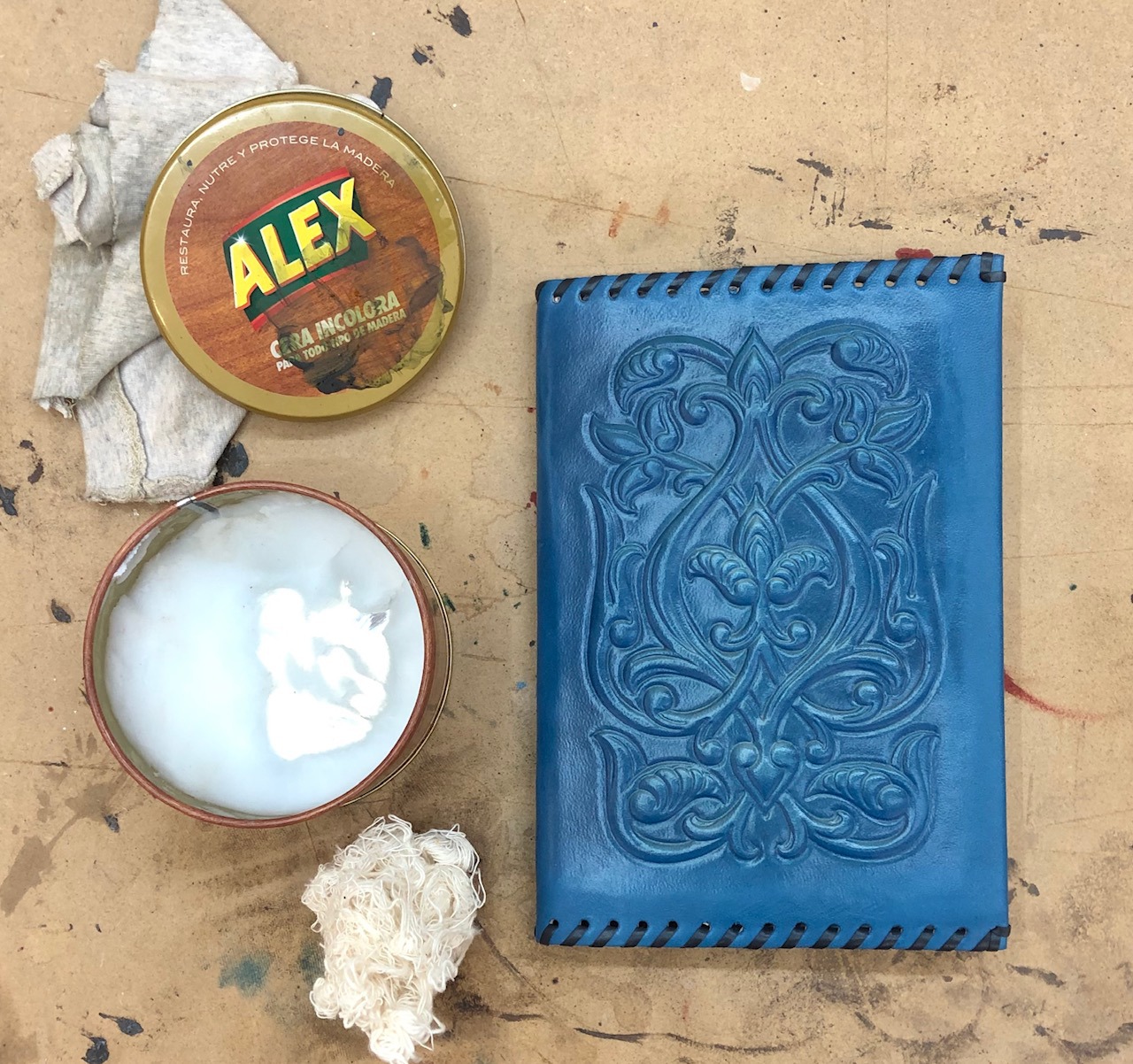 Tips to care for your leather products2020-08-14Read more
Tips to care for your leather products2020-08-14Read moreThe leather or tanned leather is a natural and organic material with excellent attributes of resistance and...
-
 5 Steps to identify Synthetic Leather2020-08-07Read more
5 Steps to identify Synthetic Leather2020-08-07Read moreCommercially speaking, leatherwork has been divided in two different groups: natural leather and synthetic leather or...
-
 Vegetable Leather Dyeing2020-07-16Read more
Vegetable Leather Dyeing2020-07-16Read moreIn this article, we want to show how to dye leather by hand, and the types of dyes we use to color leather and obtain...
-
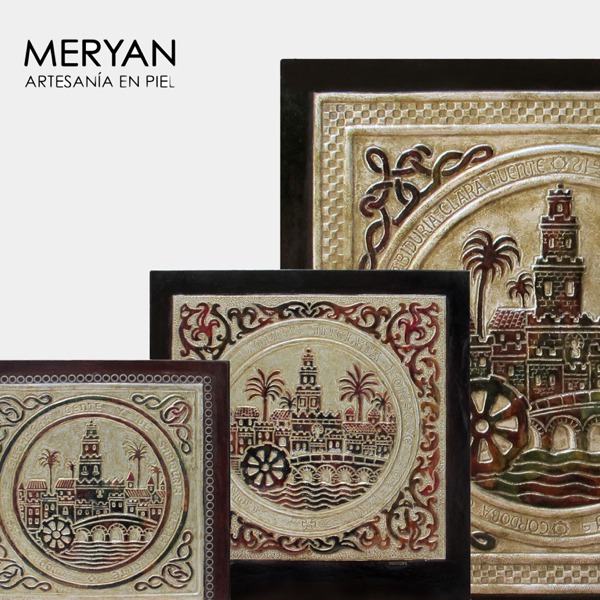 A little Story of the Seal of Cordova2020-06-23Read more
A little Story of the Seal of Cordova2020-06-23Read moreHistory of the official Seal and Coat of arms of Cordova since 13th century trough Meryan leather workshop
-
 Discover Najima backpack, the leather laptop backpack from Laceria Collection.2020-04-19Read more
Discover Najima backpack, the leather laptop backpack from Laceria Collection.2020-04-19Read moreNew embossed leather laptop bakpack for men. It is an unique and exclusive item made by cordovan style.
-
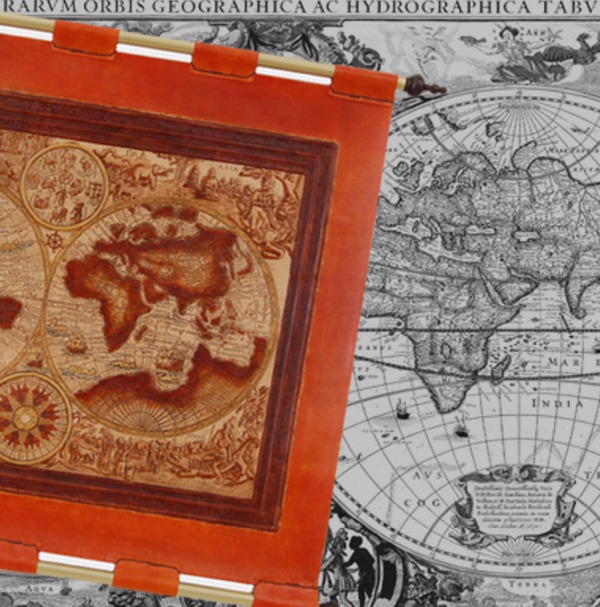 World Maps: a window to our history engraved in leather2020-02-17Read more
World Maps: a window to our history engraved in leather2020-02-17Read moreThe relevant history of maps and how they change our view of the world. Their influence in our leather handbags...
-
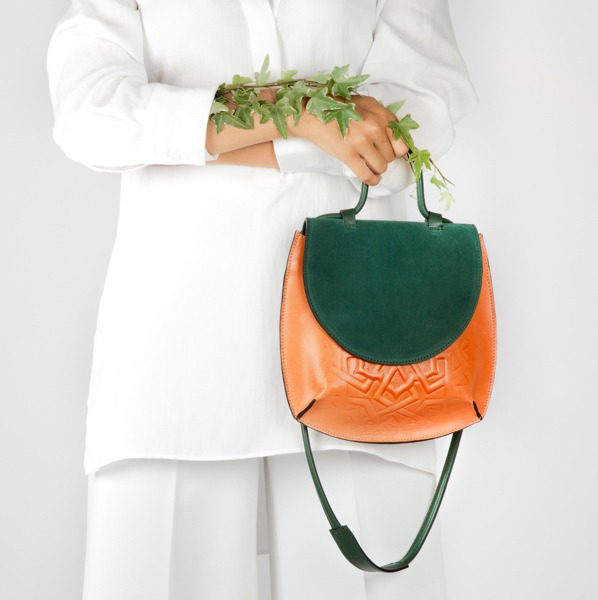 The Mezquita Bag Collection by cordovan style.2019-11-03Read more
The Mezquita Bag Collection by cordovan style.2019-11-03Read moreThe bag collection has an out-of-time where you can behold the excellent quality of Meryan´s leatherwork.
-
 Meryan and Promi Foundation2019-01-30Read more
Meryan and Promi Foundation2019-01-30Read moreMeryan cooperates since last year with Promi Foundation, working with people with special needs.
Blog categories
Search in blog
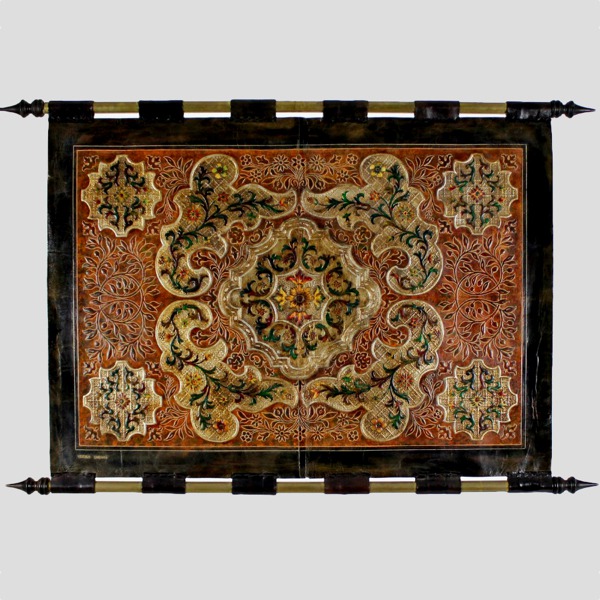
Arrayán the subtle beauty
Every year in mid-June the hispanic-arabian gardens flourished in white flowers of Arrayán at Madinat Al-Zahara and still happens after eleven centuries.
We wanted this post to coincide with the history and meaning of this beautiful bush that inspired us to name and design two pieces, the trunk and the tapestry Arrayán.
It is well known the exquisite and careful selection of fruit trees, bushes and flowers that the muslims used to choose for their gardens. They were symbols of beauty and spirituality of muslim culture. The Umayyads not only were concerned by the ornamental aspect but also by its essential oils and medical or aromatic properties.
The Arrayán, was present in the Caliphal City. Arib Ben Sa’d wrote about it on two scientific texts, he was the chronicle of Abd Al-Rahman III and his son Al-Hakam II in the 10th century. Arib did a complete list of plants in Madinat Al-Zahara, many of them were medicinal and other had delicate scents. Iris, jasmines, pomegranate trees, liliums, wild olive trees, bay trees, vines, palm trees or citrics covered the second terrace and among them were the arrayán.
The origin is in North Africa and Mediterranean basin, its oval and perennial leaves were always green in the Caliph eyes and they offered a delicate essential oil used in cosmetics and in medicine. The flower has five petals and white colour, its fruit matures in winter and is dark, rounded shape and eatable.
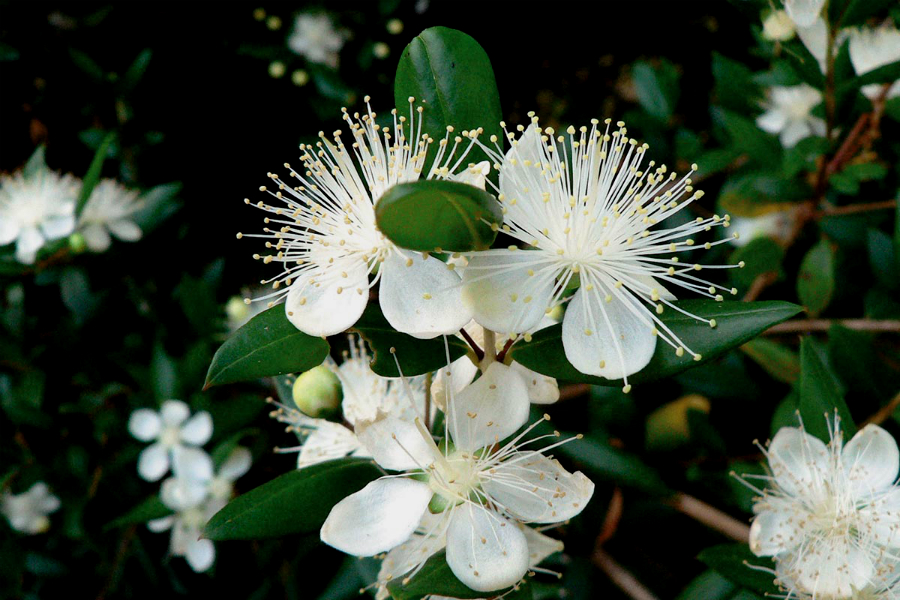
Arrayán is the name in arab - Ar-Rayhan - and it means “the Fragrant”. Greeks and Latins knew it as Myrtle and it was well valued as antiseptic and astringent. As Symbol of purity and love, the crowns of arrayán honoured the heroes and newlyweds.
This bush took root perfectly in our country thanks to a favorable climate and it is amazing to see how important were the flowers and plants for hispanic-muslims, and how they used in their atauriques or plaster decoration and in their gardens and orchards. The Umayyad not only imported materials and ornaments from around the world but also a very specific vegetation which meet their aesthetic and useful needs. Some of those plants, such as orange trees, turned into symbols of Andalusia today.
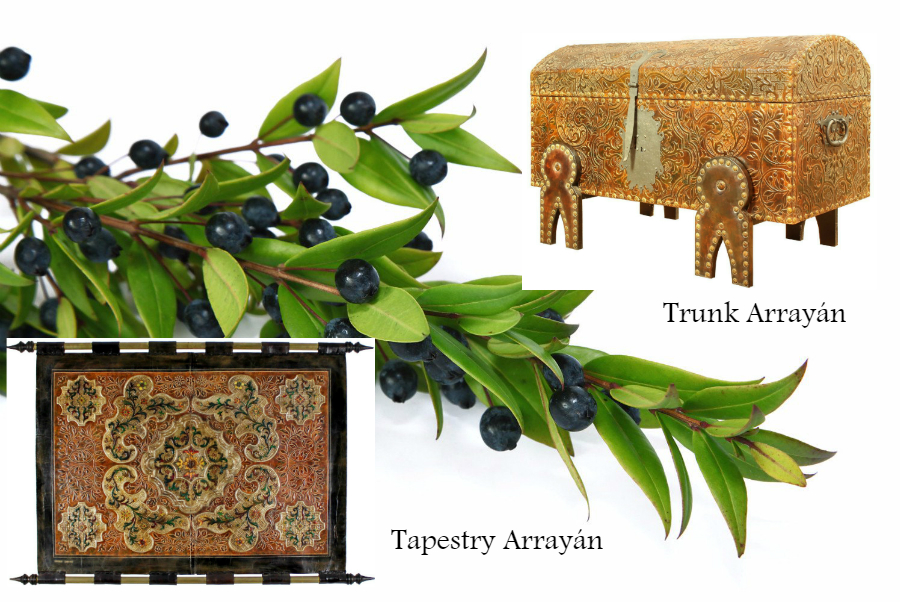
These two leather pieces named Arrayán display not only a stylised shape of this bush at full maturity of its fruit but also show different plants that embellished the Umayyad gardens: pomegranates, acanthus and the iris flower.
We invite you to observe carefully and discover the flowers of Al-Andalus.
Related posts
-
 World Maps: a window to our history engraved in leather
Posted in: Home decoration2020-02-17The relevant history of maps and how they change our view of the world. Their influence in our leather handbags...Read more
World Maps: a window to our history engraved in leather
Posted in: Home decoration2020-02-17The relevant history of maps and how they change our view of the world. Their influence in our leather handbags...Read more -
 Iris , Design with a History
Posted in: Home decoration2017-06-06Iris , takes its name from the decorative motives of this flower that is displayed the Great Mosque of Cordova and...Read more
Iris , Design with a History
Posted in: Home decoration2017-06-06Iris , takes its name from the decorative motives of this flower that is displayed the Great Mosque of Cordova and...Read more -
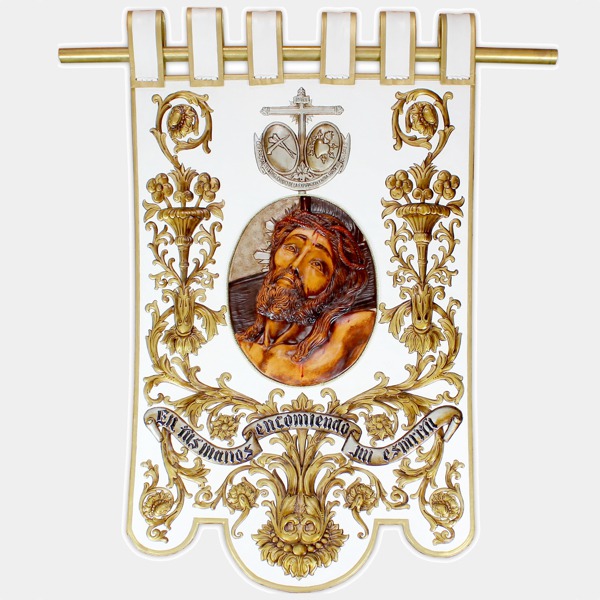 Estandarte de Semana Santa para una cofradía de Daimiel
Posted in: Home decoration2015-11-27Recientemente hemos elaborado un estandarte para la Cofradía del Santísimo Cristo de la Expiración y Nuestra Señora...Read more
Estandarte de Semana Santa para una cofradía de Daimiel
Posted in: Home decoration2015-11-27Recientemente hemos elaborado un estandarte para la Cofradía del Santísimo Cristo de la Expiración y Nuestra Señora...Read more
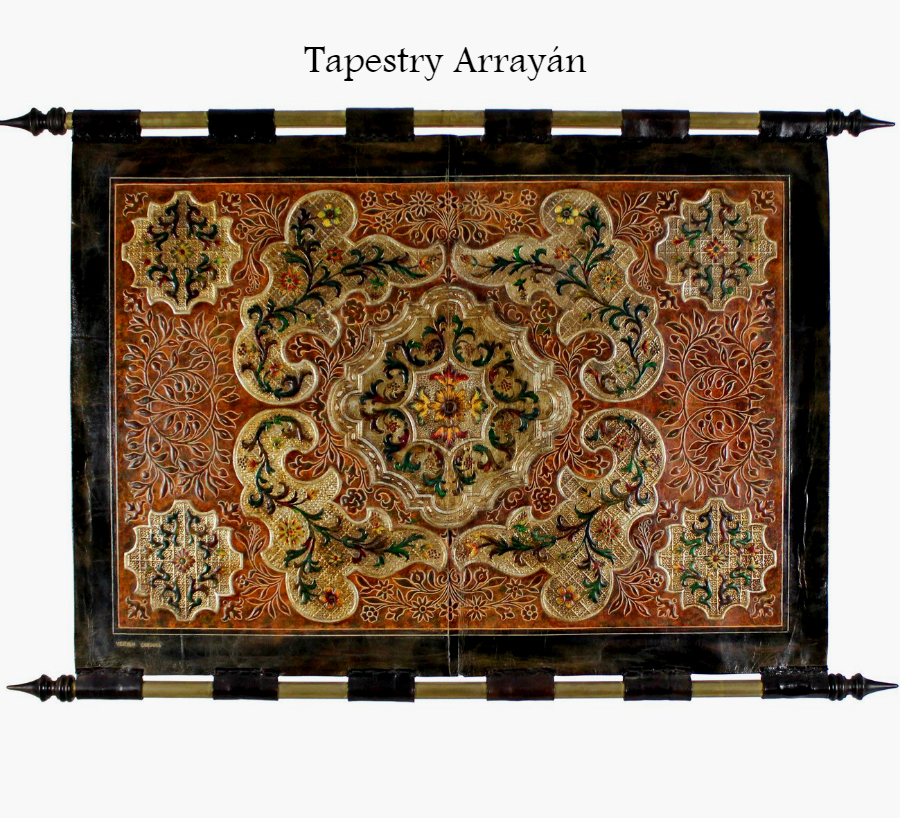
Leave a comment